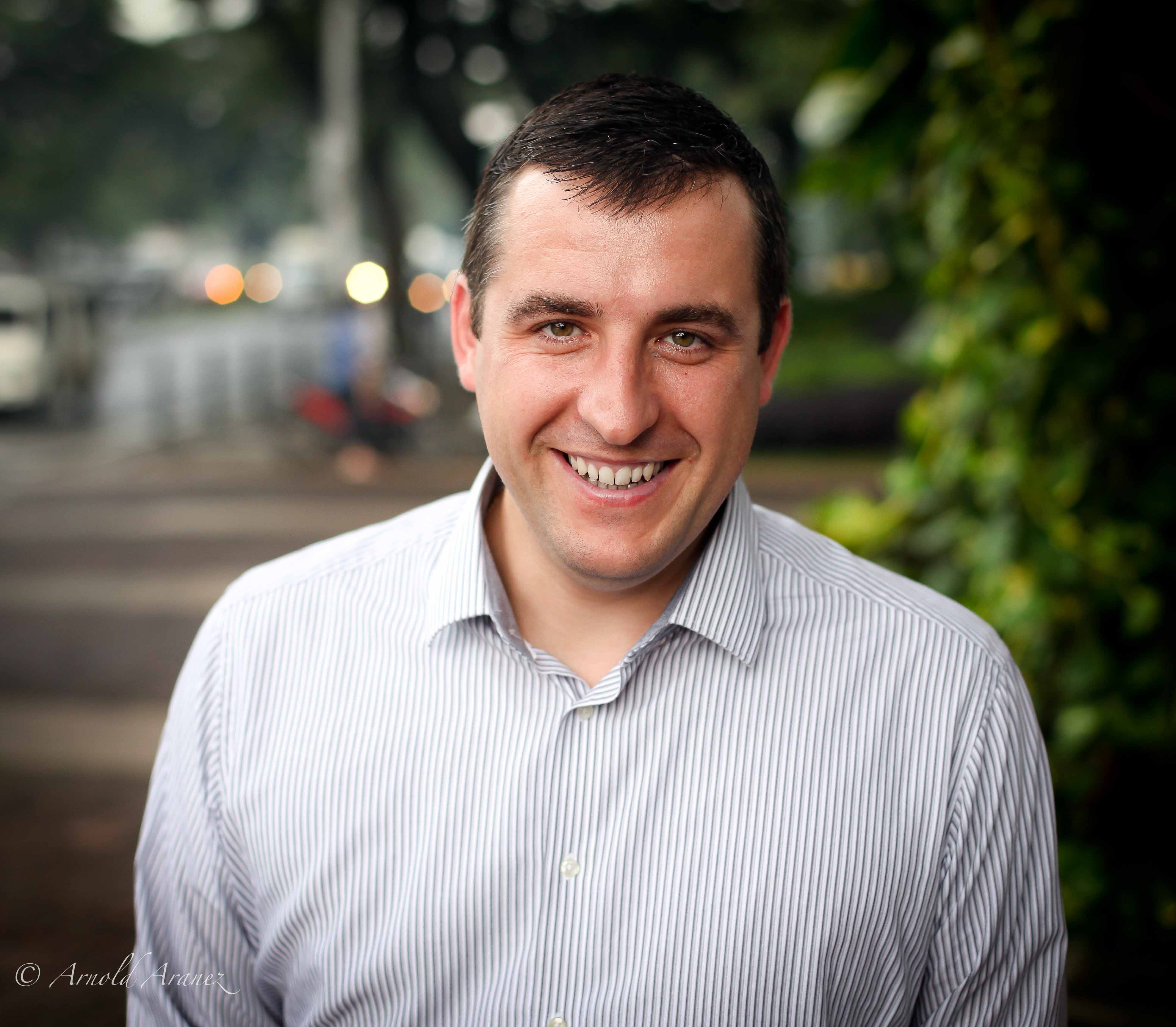
For today’s episode we are going to Munich with Bob Crozier, Head of Global Blockchain Centre of Competence at Allianz.
Bob shares his views on blockchain’s effect on the insurance industry and sheds some light on the Allianz approach to blockchain.
Blockchain in two minutes
A blockchain is a shared ledger record of transactions. When everyone in a network agrees a piece of information is correct, it is added to the ledger and the blockchain’s technology links each successive transaction to the previous one. The end result is an unbroken history of transactions that all parties can trust is correct.
Blockchain’s impact on the insurance industry
In August 2017 Bob wrote a blog post titled “how blockchain will impact insurance in 2017 and beyond”, where he examines how blockchain is changing how insurance companies operate on a fundamental level and the way insurers and customers relate in a shared economy.
This refers to the gradual change in which insurers realise that working together to solve common customer pain points requires rewriting the rules of business. Blockchain is the first time competitors have to work together to improve the industry and insurers have to learn to coexist in a world where the means of developing and delivering products or services, i.e. blockchain, require shared development and maintenance.
By working together Bob does not simply mean creating policies and exchanging risk, for which Lloyd’s of London already does a good job. Bob refers to solving more fundamental issues in the low value adding tasks that are a prerequisite for doing business. It is about solving common pain points and creating a customer-centric experience.
Bob’s post also introduces the concept of self-sovereign identity. Data privacy rules are increasingly granting more protection to consumers. Self-sovereign identity, therefore, refers to the way in which people can take control of their data and only give companies the data which is necessary for a product or service. This means that insurers will have to better calibrate the level of information required to provide a service, which will naturally lead to more customer-centric products and services. It is an opportunity for insurers to listen to customers and provide the services they want, in the right volume and in the right way.
If you are interested in Bob’s article, you can find it here.
Allianz and blockchain
Allianz is keen on experimenting with blockchain and Bob walks us through two recent projects.
1. Captive insurance blockchain
Captive insurance programmes, one of the most complicated aspects of commercial insurance, are established by multinational organisations which self-insure instead of purchasing insurance. This entails creating their own self-insurance program which pools together selected assets and insurance exposures from their global operations. They collect premiums from each operating company and pay out claims internationally as they arise. Due to the complexity of self-insuring, captive insurance companies use an insurer to effectively administer the program. Allianz is one of those insurers, having partnered with captive insurance companies to provide administration and compliance services utilising its international network.
Blockchain is integral in making this task simpler. The blockchain network automatically connects all the parties in the programme, including the captive management, the local subsidiaries and the fronting insurer. Any updates or changes to the data are shared in real time across the network, creating a much faster, transparent, secure and efficient means of distributing information, conducting business processing and recording transactions.
But why use blockchain? Since all parties are trusted in a captive insurance model, one could argue that a set of connected databases or APIs will do.
While all parties are trusted, which is often the case with private blockchains, blockchain’s value over existing technologies lies in how Allianz can now eliminate non-value-adding tasks by introducing automated processes to replace thousands of emails and massive data files. For example, smart contracts make the process simpler by automatically ensuring the appropriate pay-out goes out to the appropriate subsidiary.
2. Allianz and Monuma
Allianz partnered with Monuma to create Blockchain Patrimonia, a product that certifies and values customers’ valuable assets. This greatly reduces the cost of valuing specialty items. Instead of having a valuation expert visit customers’ homes, Monuma’s product uses photographs, metadata and blockchain.
The added value of blockchain in this scenario is that the photos can be used concurrently with their metadata. This includes GPS coordinates, image properties and time-stamping. Adding this information on an immutable ledger makes the assessment and claims processes easier. It essentially develops a proof of provenance, which is difficult to accomplish using other technologies.
3. Learning points
A major learning point has been the importance of using blockchain to create a more customer-centric service. As Bob puts it, “when you focus on the customer and solving pain points for them then you have a valid business case for any blockchain related deployment anywhere in the value chain.”
Part of this reasoning means that developing a full end-to-end blockchain insurance system is not a top priority for Allianz. The focus is on the parts of the value chain that can add immediate value by removing low value adding tasks and solving customer pain points. This will increase confidence and credibility in blockchain, making an end-to-end blockchain system feasible in the future.
Allianz and B3i
Another way Allianz is leading the blockchain revolution is B3i, which features in a previous episode and of which Allianz is a founding member. B3i came to be after a group of insurers decided to work together to address common pain points across the industry.
As B3i evolved from a consortium to a startup, so did Allianz’s involvement. It now uses its knowledge to help members get the best start in experimenting with blockchain. Bob points out B3i is not about getting a competitive advantage. It is for the industry and by the industry and its goal is to use blockchain to address industry pain points, help members reduce their cost base and make customers’ lives easier.
Different blockchain networks
Due to all these initiatives Allianz has gathered experience across different blockchain technologies. Its captive insurance program runs on IBM’s Hyperledger Fabric. Monuma utilises the Bitcoin blockchain and B3i uses Corda.
Bob informs us Allianz has no particular preference. It is important for companies to keep an open mind on blockchain and adopt a technology agnostic viewpoint. Different protocols are better-suited to different use cases and the technologies are all relatively new. It is therefore in a company’s best interest to experiment with as many blockchains as possible to better educate itself in blockchain.
Challenges in launching a blockchain product
Despite the rewards of experimenting with blockchain, developing a blockchain product or service comes with its own set of challenges.
1. Funding your project
One of the most important aspects of launching a blockchain project is getting the right C-level sponsor. The most successful implementations of any technology are those where there is investment from the company itself, especially if the company has ensured alignment of the correct resources such as customer service, operations, IT, legal and marketing.
A solid business case is necessary for a project to receive this treatment. The project must solve a problem or improve customer experience. The challenge therein is that the insurance industry does not have a good history of capturing data, such as data on how hard it is to build a policy or how expensive it is to make a claim. This means it can be difficult to compare blockchain’s potential with existing technology.
This is why getting a company to invest in blockchain involves a leap of faith and it is important to sell the vision well enough to get the sponsors onboard. The way to do so is to build confidence in the business case. Bob achieves this using a parallel comparison between the current and the new blockchain inspired processes. By critically evaluating the two processes it is possible to distil a pragmatic view of the benefits of blockchain despite the lack of markers to compare the two.
2. Persuading stakeholders
Another challenge is persuading stakeholders to utilise blockchain. The way to overcome this challenge is education. It is vital for the various domain specialists to understand how to apply blockchain in their own business processes. In Bob’s experience, once companies obtain that understanding they can use it to apply blockchain to their own business.
Advice on starting out
Launching a blockchain project can be tough so Bob shares some advice to get the best possible start.
1. Identify the problem you seek to solve
It is vital to have correctly identified the cause of the problem the project seeks to solve, instead of just its symptoms. Only then can you decide if blockchain is the right tool.
In making that decision, it is important to be intellectually honest and understand blockchain is not a cure-all. The primary objective should be improving customer experience, with operating efficiencies being an almost secondary KPI.
2. Work in your ecosystem
Blockchain is a shared space. A successful blockchain project requires bringing together all the key people that are attached to the idea. This extends to people outside your organisation and includes all the people within their realm of the project’s ecosystem. This means bringing together customers, startups, regulators, universities and more.
Understanding the technology is a minimum requirement. People need to be open to working with startups or universities that have great ideas and partnering with them to bring these ideas to market. It is necessary to leave your ego at the door, work together with others and share the learning experience.
Allianz, for example, partnered with fortiss and the Technical University of Munich. This involved giving postgraduate students real problems Allianz encountered and providing the help and expertise they needed to work on their own prototypes and PoCs and create their own solutions.
3. Get started!
It all begins with taking the first step. Get involved, reach out to your ecosystem, remember blockchain is a shared economy and just get the ball rolling.
Beyond insurance
Looking at blockchain’s potential beyond insurance, Bob pointed out how the UN’s World Food Program is using blockchain to deliver food to a Syrian refugee camp in Jordan. It is an Ethereum implementation that ensures people in need get the resources they need to survive.
Blockchain makes this possible by significantly reducing the cost of the programme. It’s a great example of blockchain removing complexity from process-based systems and linking to existing technologies, in this case the UN identity database, to make life better.
You can read more about this initiative here.
Your turn!
Bob shares some great insights on blockchain’s effect in the insurance industry and how Allianz is leading the blockchain space.
If you liked this episode please do review it on iTunes. If you have any comments or suggestions on how we could improve, don’t hesitate to add a comment below. If you’d like to ask Bob a question, feel free to add a comment below and we’ll get him over to our site to answer your questions.
Thank you Bob!







